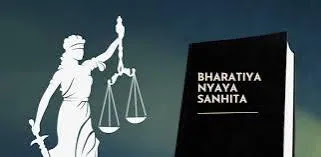BNS Section 326 – Mischief by injury, inundation, fire or explosive substance, etc
The Indian Penal Code (IPC) Section – 430, 436
Bharatiya Nyaya Sanhita (BNS) Section 326: Mischief by Injury, Inundation, Fire, or Explosive Substance
This section deals with acts of mischief that cause harm to public or private property using dangerous methods like fire, explosives, or obstructing essential resources. Below is a simplified explanation:
What is Mischief Under This Section?
Mischief involves intentionally causing damage to property, public infrastructure, or natural resources, leading to harm or danger.
Types of Offences & Punishments
| Type of Mischief | Description | Punishment | Cognizable/Bailable | Trial Court |
|---|---|---|---|---|
| Reducing Water Supply | Blocking or reducing water for agriculture, drinking, or manufacturing. | Up to 5 years jail, or fine, or both. | Cognizable & Bailable | Magistrate of First Class |
| Damaging Public Roads/Bridges | Making roads, bridges, rivers, or channels unsafe for travel or transport. | Up to 5 years jail, or fine, or both. | Cognizable & Bailable | Magistrate of First Class |
| Causing Floods or Blocking Drainage | Creating floods or blocking public drainage, causing damage. | Up to 5 years jail, or fine, or both. | Cognizable & Bailable | Magistrate of First Class |
| Destroying Navigation Signs | Removing or damaging lighthouses, navigation signals, or landmarks. | Up to 7 years jail, or fine, or both. | Cognizable & Bailable | Magistrate of First Class |
| Tampering with Landmarks | Destroying or moving government-fixed landmarks (e.g., boundary marks). | Up to 1 year jail, or fine, or both. | Non-Cognizable & Bailable | Any Magistrate |
| Using Fire/Explosives to Damage Property | Deliberately using fire/explosives to damage property (e.g., crops, buildings). | Up to 7 years jail + fine. | Cognizable & Bailable | Magistrate of First Class |
| Destroying Houses/Places of Worship | Using fire/explosives to destroy homes, temples, churches, or storage buildings. | Life imprisonment or up to 10 years jail + fine. | Cognizable & Non-Bailable | Court of Session |
Examples of Offences
- Reducing Water Supply:
- A blocks a canal to stop water flow to a village’s farms.
- Damaging Public Roads:
- B digs a trench on a highway, making it unsafe for vehicles.
- Causing Floods:
- C clogs a drainage system, flooding a residential area.
- Destroying Navigation Signs:
- D removes lighthouse bulbs, risking ship accidents.
- Using Fire to Damage Property:
- E sets fire to a farmer’s crop storage.
- Destroying a House with Explosives:
- F uses dynamite to blow up a house.
Key Points
- Intent Matters: The offender must intend to cause harm or know their actions will likely cause damage.
- Public Safety: The law prioritizes protecting public infrastructure (roads, water sources) and private property.
- Severity of Punishment:
- Highest punishment (life imprisonment) for destroying homes/places of worship.
- Lower penalties for lesser offences (e.g., tampering landmarks).
Why is This Law Important?
- Prevents reckless or malicious acts endangering lives and property.
- Protects essential resources like water and transportation networks.
- Deters use of dangerous methods (fire/explosives) for mischief.
Summary
BNS Section 326 strictly punishes acts of mischief that damage property or public resources using fire, explosives, floods, or obstruction. Penalties range from fines to life imprisonment, depending on the harm caused. The law ensures public safety and deters destructive behavior.

